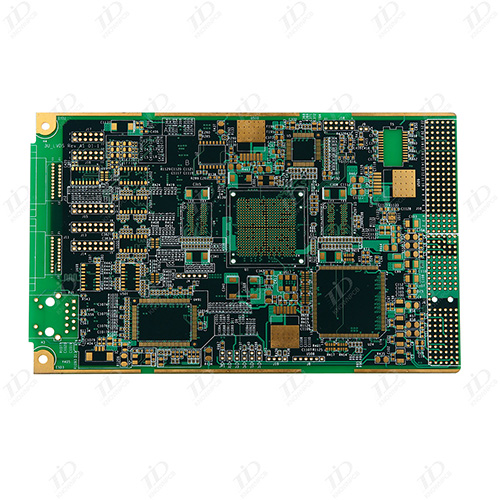 +86 755 2794 4155
+86 755 2794 4155  sales@knownpcb.com
sales@knownpcb.com
-
Shenzhen KNOWNPCB Technology Co., Ltd.
 +86 755 2794 4155
+86 755 2794 4155  sales@knownpcb.com
sales@knownpcb.com
 2023-05-17
2023-05-17
 715
715

High -speed PCB design rules are usually divided into two types: physical rules and electrical rules. The so -called physical rules refer to some design rules based on physical dimensions. For example, the line width is 4mi1, the distance between the line is 4mi1, and the length of the parallel wiring is 4mi1. The electrical rule refers to the design rules related to electrical characteristics or electrical performance, such as wiring delay control between INS and 2NS, and the total amount of stringing on a certain PCB line is less than 70mV.
Define the physical rules and electrical rules to further explore high -speed wiring. High -speed wirms based on physical rules (physical rules) include AutoActive RENers, CCT wiring, B1AZEROUTER wiring, and Router Editor wiring. In fact, these wiringers are automatic wiring drivers of physical rules, which is It is said that these roders can only automatically meet the requirements of the physical dimensions specified by the design engineer, and cannot be directly driven by the physical size requirements of high -speed electrical, and cannot be directly driven by high -speed electrical rules.
Electrical rules direct -driven high -speed wiring is very important for ensuring the integrity of high -speed design signals. Design engineers always get electrical rules first and design specifications are also electrical rules. It is not a physical rule. The final physical design to meet the electrical rules that meet the design is the most essential. Physical rules are only a conversion of electrical rules by component manufacturers or design engineers. We always expect that this conversion is equivalent and corresponding. The actual situation is not the case.
Take data transmission with LVDS chips to complete the high speed (up to 777.76Mbps) and long distance (long Loom) as an example. Since the signal amplitude of LVDS technology is 3500, the usual design specifications always require the total signal line to total on the signal line. The string disturbance value should be less than 20%of the signal switching amplitude, that is, the maximum total number of string disturbances is 350mv x20%= 700. This is the electrical rule. Among them, 20%of the percentage depends on the noise tolerance of LVDS. Essence
For IS_SYNTHESIZER, as long as the design engineer specifies the string value on the LVDS signal line, it can automatically adjust and refine it to ensure the requirements of electrical performance when the wiring. Impact of LVDS signal. For the wiring -based wiring -based wiring, you first need to analyze and consider some imagination. Design engineers always think that the skewers between signals only depend on the length of parallel signals, so it can be on the high -speed circuit. Do some imagination analysis in the front -end environment of the design. For example, the length that can assume that the length of the pairing is 2.5mil, and then analyze the string between them. This value may not be 70MV, but you can further adjust and walk through the conclusions. The length of the length, if the length of the parallel walk is a certain value, such as 7mi1, the skewers between the signal are basically 70mV, then the design engineer believes that as long as the length of the differential line is controlled to the length of the parallel line is controlled at the range of 7mi1 Inside can meet the requirements of such electrical characteristics (the signal string disturbance value is controlled within 70mV), so when the actual physical PCB layout wiring, the design engineer obtained such a high -speed PCB design physical rules. Meet the requirements of this physical size.
There will be two problems here: First, the conversion of the rules is not the same. First of all, the string between the signals is not determined by the length of the line between the parallel signals, and it depends on the position of the signal and the position of the parallel line segment. And there are many factors such as matching, and these factors may be difficult to predict, and it is not possible to fully consider before actual physical realization. Therefore, after such a conversion, it cannot ensure that it can meet the original electrical rules while meeting these physical rules. This is why the PCB systems still cannot work normally when the above high -speed wirms are satisfied with the rules. Secondly, it is almost impossible to consider many influences at the same time when these rules are transformed. It is difficult to consider the impact of all relevant signal cables around when considering signaling. These two conditions determine that high -speed wirms based on physical rules will have a big problem in high -speed and high -complex PCB system design, and high -speed PCB wiring -based high -speed PCB wraps are better solved by electrical rules. Problems in this regard.

Or call +86 755 2794 4155
Inquiry Now

